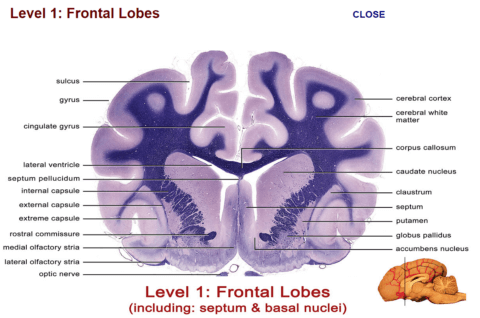In recent years, advances in neuroscience have provided a glimpse into the emotional lives of our canine friends. Magnetic Resonance Imaging (MRI) scans of dog brains have shed light on their capacity to experience love, find joy, and show fear. This article explores the fascinating findings from MRI studies and their practical implications for dog owners.
Understanding Love and Attachment

MRI scans have revealed that dogs, like humans, exhibit brain activity associated with love and attachment. Research conducted by scientists including Dr Gregory Burns at Emory University have, since 2012, trained dogs to lay in scanners and observe the changes that can occur in the brain when presented with various stimuli such as food, the sights/sounds of their owner, different tones/pitches of voices and more. The researchers found that dogs’ brains release oxytocin, often referred to as the “love hormone,” when they interact with their owners. Oxytocin is known to play a crucial role in social bonding and feelings of love and trust.
These findings suggest that the bond between dogs and their owners is not purely based on conditioned responses or learned behaviours but is rooted in genuine emotional connections. Understanding the neurobiology of love in dogs can help dog owners foster stronger bonds and provide a deeper sense of companionship.
Experiencing Joy and Pleasure

MRI scans have also provided insights into the joyous experiences of dogs. When dogs engage in activities they find pleasurable, such as playing or receiving affection, their brains exhibit increased activity in the reward centres. These regions, including the nucleus accumbens and the caudate nucleus, are associated with the release of dopamine, a neurotransmitter linked to pleasure and motivation.
Knowing that dogs experience joy and derive pleasure from certain activities can guide dog owners in creating enriching environments and tailored experiences for their pets. Engaging in activities that bring dogs joy not only enhances their overall well-being but also strengthens the bond between owner and canine companion.
Revealing Fear and Anxiety
MRI scans have shown to be useful in understanding the fear and anxiety experienced by dogs. Dogs exposed to stimuli that elicit fear, such as loud noises or unfamiliar environments, exhibit heightened activity in brain regions associated with fear processing, including the amygdala and the prefrontal cortex.
In Burns’ (2020) paper entitled Decoding the Canine Brain, he states:
Dogs, of course, cannot speak, so they can’t report whether they’re feeling sad or anxious. Although neuroimaging may soon change things, we currently have to rely on dogs’ behaviour to infer what they are feeling. For example, when dogs are scared, they behave in characteristic ways, which include trembling, hiding in closets or under furniture, chewing or scratching doors to escape, pacing, barking, whining, and defecating or urinating in the house. When these occur in the context of being left alone, they are often labelled “separation anxiety.” Aggression is another frequently misunderstood manifestation of emotional states in dogs. What humans label as aggression may be a normal part of a dog’s behavioral repertoire, which includes barking, growling, and biting…
Interestingly, dogs with behavioural problems often improve when they are treated with human medications for depression and anxiety. Serotonin and norepinephrine reuptake inhibitors, like fluoxetine (Prozac), are some of the most commonly prescribed drugs in veterinary behavioural medicine. Others include benzodiazepines, tricyclic antidepressants, beta-blockers, and even lithium. Indeed, the psychopharmacopeia for dogs is nearly the same as for humans. The fact that these medications work in dogs speaks to common biological mechanisms of mood regulation. And unlike humans, dogs are not susceptible to placebo effects (although their owners might be, by expecting improved behaviour.)
Recognising the neural correlates of fear can help dog owners identify triggers that may cause distress to their pets. This knowledge enables them to provide appropriate support and implement humane strategies to alleviate fear and anxiety, such as systematic desensitisation and counterconditioning techniques.
Practical Applications for Dog Owners
The insights gained from MRI studies on dogs’ emotional experiences have several practical applications for dog owners. Firstly, understanding the neural mechanisms of love and attachment can guide owners in nurturing strong, positive relationships with their dogs, enhancing mutual trust and companionship.
Secondly, recognising the activities that bring joy to dogs can help owners create stimulating environments and design tailored experiences that promote happiness and mental stimulation.
Lastly, identifying the neural signatures of fear and anxiety enables owners to take proactive measures to reduce stress and provide a sense of security for their dogs, leading to improved well-being and overall quality of life.
To learn more about Dr. Gregory Berns and his ground-breaking research, watch the video below.
References
- Nagasawa, M., et al. (2015). Oxytocin-gaze positive loop and the coevolution of human-dog bonds. Science, 348(6232), 333-336.
- Berns, G. S., et al. (2013). Functional MRI in awake unrestrained dogs. PLoS ONE, 8(8), e57587.
- Andics, A., et al. (2016). Neural mechanisms for lexical processing in dogs. Science, 353(6303), 1030-1032.
Learn more about our classes

Get Hanne's book, clothing and more
Hanne has a number of publications including her book Playing With Your Dog to help owners work out the games that are best suited for their pet to play throughout his life, from puppyhood to old age, available from Amazon. Check out Hanne's range of contemporary casuals The Collection – for pet lovers made from recyclable, organic materials that are sustainably sourced.

